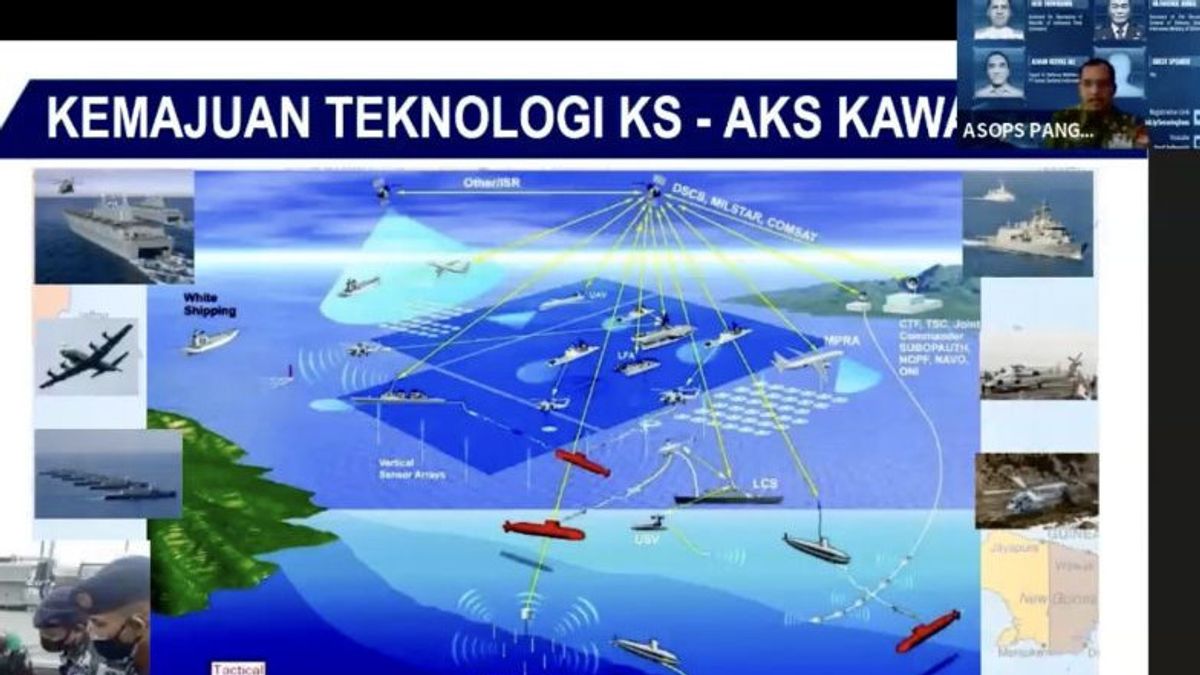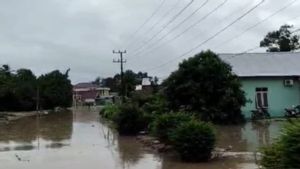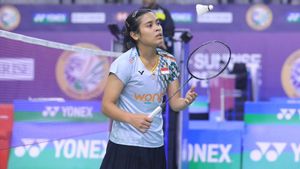JAKARTA - The Indonesian Navy (AL) and defense experts believe that Indonesian underwater waters are still vulnerable to being infiltrated by foreign submarines, so there needs to be an underwater detection system installed at vulnerable points.
Assistant Operations to the Commander of the Fleet Command (Pangkoarmada) of the Republic of Indonesia, First Admiral TNI Heri Triwibowo, in a discussion event that was attended in Jakarta, Tuesday, said that the detection system is expected to immediately strengthen the Indonesian Navy, especially in Indonesia's narrow underwater waters (choke point).
Indonesia has severalchoke points, namely in the Malacca Strait, Sunda Strait, Lombok Strait, Sulawesi Strait, and North Natuna Sea.
"The use of detection equipment and acoustic sensors itself is very necessary, one of which is to find out the movement of submarines passing through Indonesia," said Heri Triwibowo, who represented the Commander of the Fleet Command, Vice Admiral Denih Hendrata, during a discussion event reported by ANTARA, Tuesday, March 26.
Therefore, he hopes that in the future the Indonesian Ministry of Defense can pay attention to these needs and then consider purchasing an underwater detection system in the future defense equipment procurement plan.
He conveyed that the Indonesian Navy is currently strengthened by several ships equipped with sensors and anti-submarine weapons. However, the number of ships that have anti-submarine capabilities, according to him, needs to be reproduced as well as the procurement of submarines.
The Indonesian Navy currently operates four submarines to maintain Indonesia's waters, which covers an area of 6.4 million square kilometers. This amount, when compared to countries in the region with a much narrower sea area than Indonesia, is certainly still lacking.
"In Southeast Asia, we can see that Indonesia is so wide, currently only has four submarines, while Vietnam, which is smaller than us, has more," said Heri.
The four submarines that are currently strengthening the Indonesian Navy, namely KRI Cakra-401, KRI Nagapasa-403, KRI Ardadedali-404, and KRI Alugoro-405, while Vietnam has at least eight submarines, some of which have diesel-electric power, aka undetected when maneuvering under the sea.
"Submarine power is a marine force that should be taken into account by its invisible proximity and lethal hitting power capability, so we must try to develop and add numbers," said the high-ranking Indonesian Navy officer.
SEE ALSO:
In the same discussion event, Defense Expert Alman Helvas Ali assessed that Indonesia's ability to counter submarine threats or other attacks under the sea was still inadequate.
"We don't have underwater listening devices (undersea detection devices, ed.) that we install in our waters, including diphoke points. It's been homework for a long time," said Alman.
The challenge related to procurement, Alman continued, is that it is also related to Indonesia, which still relies on acoustic and electronic devices, both of which are crucial for underwater detection systems made by the foreign defense industry. So far, he said there is no domestic defense industry that makes underwater detection devices such as sonar/dipping, hydrophone, or ponobuoy.
"Our electronic defense industry only focuses on the problem of air or surface targets, namely radar, but has not yet entered the underwater acoustics and electronics," he said.
The English, Chinese, Japanese, Arabic, and French versions are automatically generated by the AI. So there may still be inaccuracies in translating, please always see Indonesian as our main language. (system supported by DigitalSiber.id)

















